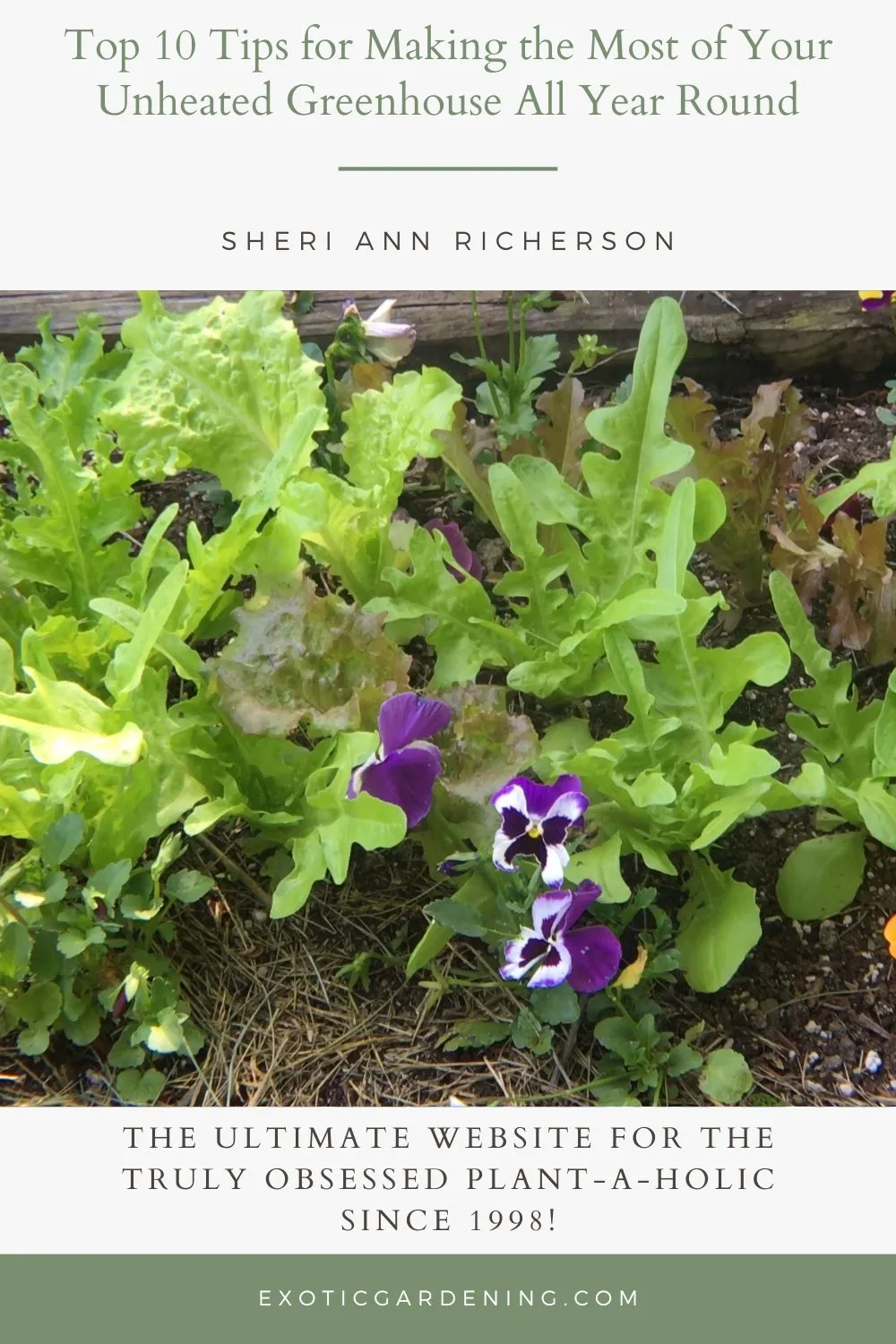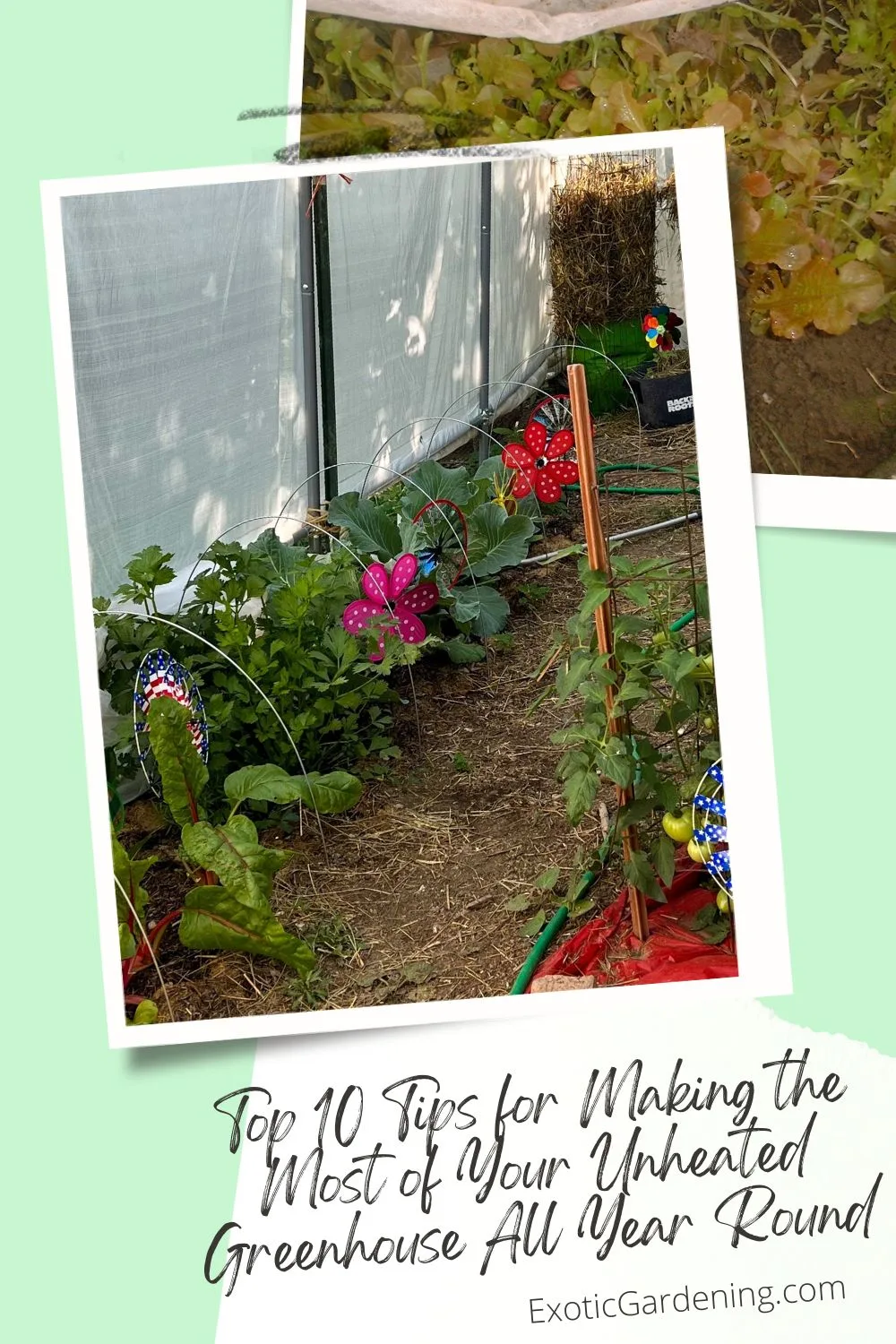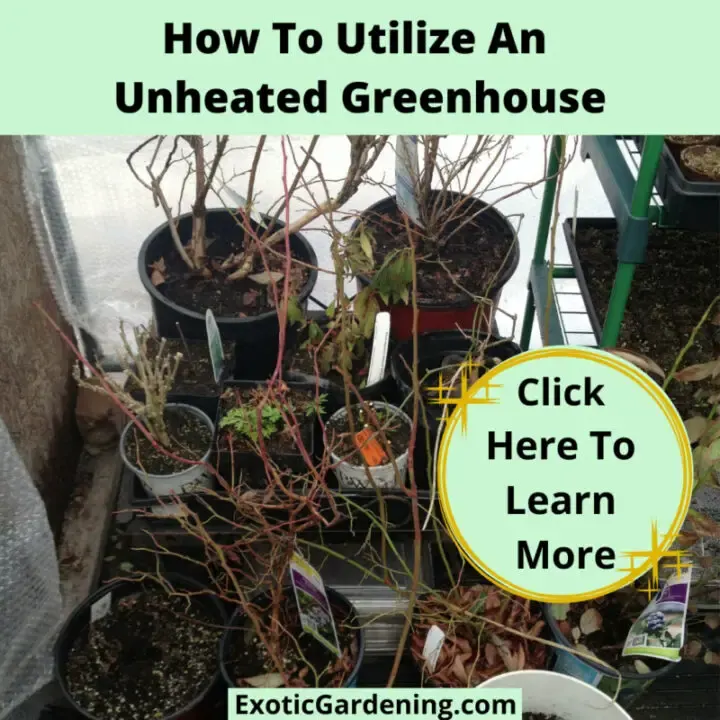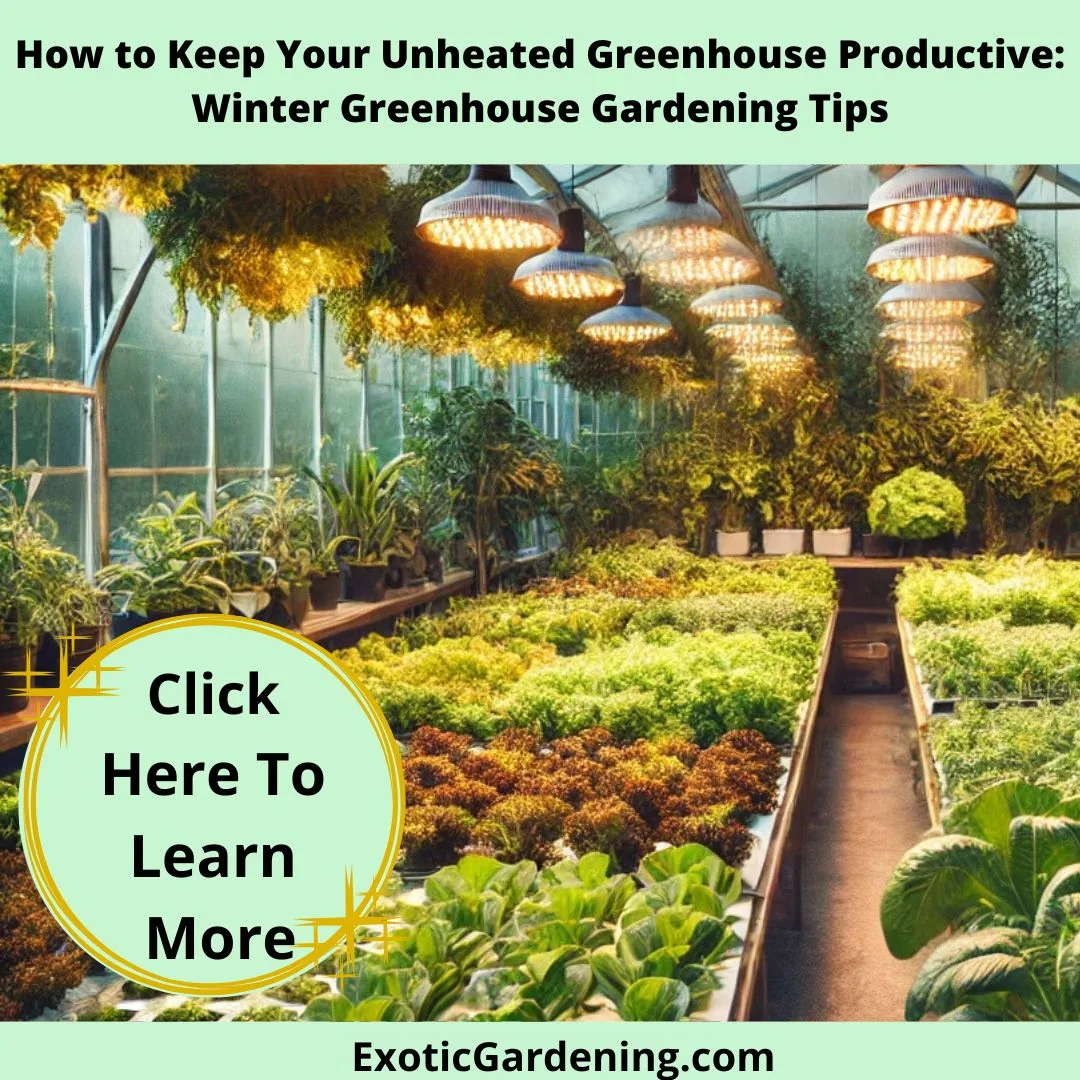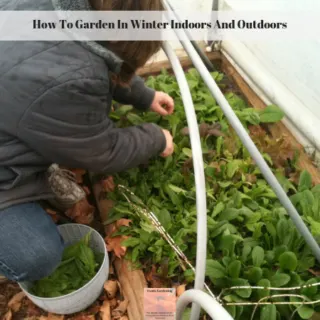Managing an unheated greenhouse can feel intimidating, especially during the colder months, but making the most of your unheated greenhouse is actually easier than you think!
With a bit of preparation and the right approach, you can transform your greenhouse into a thriving oasis, even when frost blankets the ground outside.
The secret lies in understanding your greenhouse’s unique microclimate and working with it to provide the best conditions for your plants.
With the right crops, a focus on light and temperature management, and a few clever tricks, you can ensure your plants not only survive but thrive all year round.
Whether you’re a seasoned gardener looking to extend your growing season or a beginner taking the first step toward self-sufficiency, these tips will guide you through the process.
By following these simple strategies, you’ll learn how to maximize the potential of your unheated greenhouse and enjoy fresh produce no matter the season.
Here are my top 10 tried-and-true tips for making the most of your unheated greenhouse.
1. Choose Cold-Hardy Crops
Winter doesn’t have to mean an end to fresh produce.
The key is growing crops that naturally thrive in cooler temperatures.
Hardy greens like spinach, kale, Swiss chard, arugula, and mache are excellent choices for the colder months.
Root vegetables such as carrots, radishes, and turnips can also do well with the added shelter of a greenhouse.
These crops are more resilient to frost and can often withstand brief dips below freezing without damage.
To make the most of these plants, consider planting in succession so you can harvest continuously throughout the season.
This ensures you’ll have a steady supply of fresh greens and root veggies, even during the coldest months.
2. Maximize Sunlight
Sunlight is one of the most important factors in a successful unheated greenhouse.
During winter, the sun is lower in the sky, so proper positioning is essential.
Ideally, your greenhouse should be oriented to face south to capture the maximum amount of sunlight.
If possible, place it away from tall trees or structures that might cast shadows during critical daylight hours.
Keeping the greenhouse panels clean is equally important.
Dust, algae, and grime can block sunlight, reducing the efficiency of your greenhouse.
Clean the panels regularly with a mild soap and water solution, especially before winter sets in.
This simple task can make a huge difference in the amount of light your plants receive.
3. Use Thermal Mass
Thermal mass is an effective way to maintain more stable temperatures in your unheated greenhouse.
Materials like water, stone, or concrete can absorb heat during the day and release it slowly at night, helping to keep the temperature more consistent.
A popular method is using black water barrels filled with water.
The black color absorbs sunlight more efficiently, and the water retains heat.
Similarly, placing stones, bricks, or concrete pavers around your greenhouse can create a similar effect.
Strategically positioning these thermal masses near plants ensures they benefit from the gentle warmth overnight.
4. Mulch, Mulch, Mulch
Mulching is a simple but powerful way to protect plant roots from freezing temperatures.
Organic mulches like straw, shredded leaves, or wood chips act as an insulating layer over the soil, keeping it warmer and reducing moisture loss.
Apply a thick layer of mulch around the base of your plants, especially for root vegetables.
This not only helps to regulate soil temperature but also prevents weeds from competing with your crops.
Mulch breaks down over time, enriching the soil, so it’s a win-win!
5. Install Frost Cloth
Frost cloth is a must-have for greenhouse gardeners during the colder months.
These lightweight, breathable fabrics are designed to trap heat while still allowing light to pass through.
Draping frost cloth over your plants provides an extra layer of insulation, which can make a significant difference on frosty nights.
Secure the frost cloth tightly to prevent drafts and ensure it doesn’t touch the plants directly, as condensation can freeze and cause damage.
For added convenience, look for frost cloth with grommets or ties to make installation and removal easier.
6. Ventilation Matters
Even in winter, proper ventilation is essential to prevent mold, mildew, and disease.
Stagnant air can lead to problems like damping-off, which can kill seedlings.
On sunny days, even in cold weather, temperatures inside a greenhouse can rise quickly, so it’s important to open vents or doors to let fresh air circulate.
To strike the right balance, consider using an automatic vent opener.
These devices are temperature-sensitive and will open or close vents as needed, saving you the hassle of constant monitoring.
7. Double Up
For especially cold nights, consider adding a second layer of protection inside your greenhouse.
Row covers, mini tunnels, or cloches placed over individual plants or rows create a microclimate within the greenhouse, providing extra warmth and protection.
You can make your own row covers with wire hoops and plastic sheeting, or purchase ready-made options.
Double layering like this can make the difference between plants surviving or succumbing to a cold snap.
8. Keep Soil Warm
Cold soil can slow plant growth and germination, even in an otherwise warm greenhouse.
To combat this, consider using heated mats under seed trays or beds.
These mats provide consistent, gentle warmth that encourages faster germination and stronger root development.
Another method is to incorporate a compost bin directly inside your greenhouse.
As compost breaks down, it generates heat, which can help warm the surrounding soil and air.
Just be sure to manage the bin carefully to prevent odors or pests.
9. Monitor Temperatures
Keeping an eye on the temperature inside your greenhouse is crucial, especially during extreme weather.
Invest in a simple thermometer or a digital weather station to monitor conditions.
Some advanced models even allow for remote monitoring via smartphone apps, so you can check on your greenhouse from anywhere.
For added precision, use a thermometer with a built-in hygrometer to measure humidity levels.
Too much moisture in the air can lead to mold and mildew, while too little can stress plants.
By keeping track of these factors, you can make informed decisions about when to ventilate, water, or add extra insulation.
10. Plan Ahead
Successful greenhouse gardening requires careful planning.
Use a garden planner to map out your planting schedule, keeping in mind the growth habits and maturity times of your chosen crops.
This ensures a continuous harvest throughout the year.
Planning also involves anticipating challenges like pests or extreme weather.
For example, if you know a cold front is coming, you can prepare by adding extra insulation or bringing in additional thermal mass.
A detailed plan will help you stay organized and make the most of your unheated greenhouse, no matter the season.
Making the Most of Your Unheated Greenhouse
An unheated greenhouse is an incredible tool for extending your growing season and enjoying fresh produce year-round.
With these 10 tips, you’ll be well-equipped to tackle the challenges of greenhouse gardening, even in colder climates.
From choosing the right crops to utilizing thermal mass and frost cloth, each strategy works together to create a thriving environment for your plants.
Don’t be afraid to experiment and adapt these tips to suit your specific needs.
With a bit of effort and creativity, your unheated greenhouse can become a productive oasis, no matter the weather outside.
For more detailed guidance on unheated greenhouse gardening, check out my blog post, “How to Utilize an Unheated Greenhouse.”
Whether you’re looking for seasonal planting advice or advanced techniques, it’s packed with information to help you succeed.
Dig Deeper: Expand Your Greenhouse Know-How With These Posts:
- Cool Greenhouse Uses
Unlock creative ways to make your greenhouse work for you all year round. - How to Utilize an Unheated Greenhouse
Maximize the potential of your unheated greenhouse with these easy tips. - Preparing the Greenhouse for Winter
Protect your plants and set up your greenhouse for winter success. - Greenhouse and Cold Frame Garden Structure Ideas
Find inspiration for innovative structures to elevate your gardening game. - How to Garden in Winter Indoors and Outdoors
Keep your garden thriving in winter, no matter where you grow. - Greenhouse and Season Extenders
Discover tools and strategies to stretch your growing season effortlessly. - Just One More Greenhouse
Thinking of expanding? See how adding another greenhouse can transform your gardening journey.
Greenhouses And Grow Lights
Dive into a collection of insightful articles designed to help you make the most of your greenhouse and grow light setup. Whether you’re a seasoned gardener or just starting, these blog posts cover everything you need to know to optimize plant growth year-round. From tips on maintaining your greenhouse to choosing the best grow lights for specific crops, this comprehensive list has something for everyone.
Learn about:
Seasonal greenhouse gardening techniques to keep your plants thriving, even in winter.
How to select, set up, and use grow lights effectively for indoor or greenhouse gardening.
Troubleshooting common greenhouse and lighting challenges, like temperature control and light intensity.
DIY projects and budget-friendly ideas to enhance your growing space.
Whether you’re growing food, flowers, or foliage, this collection of articles will inspire and empower you to create a productive and thriving growing environment. Let these resources guide you on your gardening journey!
5 Factors to Consider When Choosing Greenhouse Lighting
There are five factors that are important to consider when choosing greenhouse lighting. Learn what they are and why they are important.
Rare Tropical Plants in Greenhouse #1
Sometimes it's fun to share information on the plants you are growing, especially the rare tropical plants with others.
Cool Greenhouse Uses
Learn cool greenhouse uses for those of you that have a greenhouse but use passive solar heat or a small heater.
How To Utilize An Unheated Greenhouse
An unheated greenhouse is easy enough to utilize for a winter vegetable garden or even for winter seed starting.
How to Keep Your Unheated Greenhouse Productive: Winter Greenhouse Gardening Tips
Learn winter greenhouse gardening tips to keep your unheated greenhouse productive with crops, insulation, and microclimate tricks.
Dream Big: Revolutionize Your Garden with Year-Round Gardening in an Unheated Greenhouse
Discover the benefits and techniques of Year-Round Gardening in an Unheated Greenhouse for fresh, sustainable, and thriving winter crops.
Feeling Overwhelmed? Unheated Greenhouse Growing Made Simple for Beginners
Unheated greenhouse growing is simple and rewarding. Start small, experiment, and enjoy fresh winter harvests with these easy tips!
Preparing The Greenhouse For Winter
Learn about heating greenhouses in winter and preparing the greenhouse for winter so it is ready for winter greenhouse gardening.
Greenhouse And Cold Frame Garden Structure Ideas
Learn about tunnel houses, greenhouses and cold frame garden structures as well as how they are used to grow plants outdoors year round.
How To Garden In Winter Indoors And Outdoors
Learn how to garden in winter indoors and outdoors. There are many vegetables and herbs that don't mind the cold or thrive in containers.
Greenhouses And Season Extenders
Learn how greenhouses and season extenders help you grow fresh, healthy produce year-round, even in cold climates.
Just One More Greenhouse - Please
One more greenhouse means endless gardening possibilities! Discover tips and inspiration to expand your growing space effectively.
Rebuilding Beauty: My Tropical Greenhouse September 2011
Explore my tropical greenhouse September 2011 journey, showcasing rare plants, restoration efforts, and inspiring gardening tips.
Garden #9 - The Greenhouse Garden
The greenhouse garden area consists of a large greenhouse that is divided into several sections.
These sections operate year-round and house a wide array of tropical plants.


